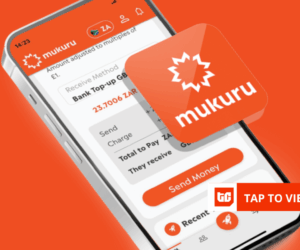In Nigeria, the notion that transactions on fintech platforms like OPay and Moniepoint are faster than traditional banks has become almost a cliché. People often say banks are “slow because they still run batch systems,” while fintech platforms are “instant because they use liquidity pools.”
But, is that true?
When you examine how money moves in Nigeria, the picture is more nuanced. The real story lies in the rails everyone uses, the way fintech platforms and banks connect to those rails, the design of their ledgers, and how they package the experience for users.
At the heart of this is the NIBSS Instant Payment system (NIP), Nigeria’s real-time credit transfer scheme. When you send money from one institution to another, the receiving bank or wallet provider is instructed to credit the beneficiary immediately.
That’s why recipients see money “now.”
What many people don’t realise is that behind the scenes, NIP does not settle each transaction one by one. It uses deferred net settlement. This means that all obligations between banks and payment companies are bundled and settled later, in cycles during the day, through the Central Bank of Nigeria’s real-time gross settlement system (RTGS).
The settlement does not happen every second. Official NIBSS materials describe multiple settlement cycles per day – historically two per day, and more recently four cycles. Regardless of the count, the design is the same: users get instant value, and the institutions square up with each other in scheduled windows.
This “instant user credit plus later net settlement” is the same model used by most real-time payment systems worldwide.

This is what makes instant transfers possible at scale. Otherwise, every single ₦2,000 transfer will have to flow through the CBN immediately.
Batch systems still exist, but they are not used by most for day-to-day transfers. Nigeria’s NEFT (NIBSS Electronic Funds Transfer) is a batch system, where transactions are cleared in windows or sometimes the next day.
If you’ve ever sent money and it landed hours later, that was probably NEFT, not NIP. The key difference is that NIP is instant, while NEFT is batch. Many banks and fintech platforms support both, and that’s why customer experiences vary.
When a bank transfer feels slow, it is often because it went through NEFT, or because there was a fraud review, a compliance hold, or a system downtime, not because banks only process in batch mode.
Where fintech feels different is in how they manage money inside their ecosystems. If you send money from one OPay wallet to another, or from a Moniepoint account to a Moniepoint account, no interbank rail is touched.
The platform simply debits one internal ledger and credits another. That’s why it’s instantaneous by design, the same way bank-to-same-bank transfers are always instant.
When a fintech sends money outside its ecosystem, however, it still uses NIP. In those cases, fintech platforms often connect indirectly through partner banks and rely on NIP to instruct the receiving institution to credit instantly, with net obligations cleared later.
Some people describe this as fintech using “liquidity pools.” That phrase is a little misleading because it sounds like decentralised finance. In reality, what fintech platforms use are safeguarding accounts and prefunded settlement balances.
For Mobile Money Operators (MMOs) like OPay, customer wallet funds are required by regulation to be held with deposit money banks. This is the wallet float, safeguarded in trust accounts, not a speculative pool of capital.
Since May 2024, these MMO funds have been protected by NDIC pass-through insurance, which was raised to ₦5 million per subscriber per MMO. This means that if OPay failed, each user’s wallet funds up to ₦5 million would be insured, just like bank deposits.
Fintech also manage its operations by pre-funding settlement accounts at its partner banks. This ensures that when payments are initiated, they don’t fail for lack of available balances. That practice improves reliability, but it doesn’t mean fintech platforms are fronting money before it exists.
Interbank transfers still run on NIP’s rule: instant beneficiary credit, later net settlement through CBN.


The licensing status of each fintech also matters. OPay is licensed by the CBN as a Mobile Money Operator. Moniepoint, on the other hand, operates as Moniepoint Microfinance Bank, a regulated bank supervised by the CBN, with deposits insured by NDIC.
The Moniepoint group also holds other licences, including Switching and Processing. This dual posture is why Moniepoint can offer full bank accounts, debit cards, and merchant services while also processing payments at scale.
In practice, this means that Moniepoint can credit its customers instantly on its internal ledger while also connecting directly to NIP for transfers.
What really makes fintech faster?
The real difference between fintech entities and banks, then, often comes down to technology architecture.
If fintech seems faster, it’s usually for four reasons. First, on-ledger wallet transfers are instantaneous because no external rail is used. Second, fintech platforms automate everything end-to-end, including retries and reversals.
When NIP throws back an error code, a fintech app will often update balances and issue a reversal right away. Banks are slower at this, sometimes leaving users confused for hours.


Features like virtual accounts, beneficiary validation, and clear status updates give users confidence. Even if the settlement is still pending, the app tells them what’s happening. Banks often leave users staring at “processing.”
Lastly, fintech platforms make sure their settlement accounts are always prefunded, so transactions rarely bounce.








